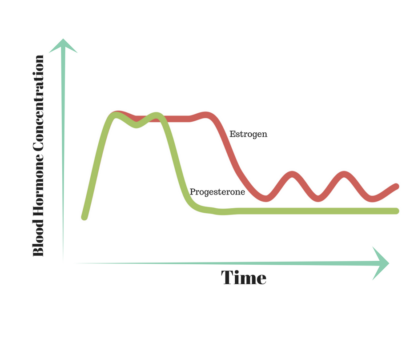When the female body crosses the childbearing years, the hormone levels start fluctuating and dropping, making the body go through numerous changes in order to cope up with the stress. This is the period of ‘menopause’, and these dwindling hormones, the reason for hot flashes, mood swings and sometimes, even depression.
Latest findings have even revealed that the falling levels of estrogen during menopause can trigger conditions such as Alzheimer’s and other forms of dementia.
Maintaining the level of estradiol (the type of estrogen that has the greatest effect on the brain) is important for memory function and may prove to be vital in limiting the development of Alzheimer’s.
That’s when arises a need to counteract these symptoms.
Hormone Replacement Therapy (HRT) is a natural way of replacing these diminished hormones.
However, it is an acceptable option for the relatively young (within 10 years of menopause) and healthy women who are bothered by moderate to severe menopausal symptoms.
Initially, doctors prescribed HRT in the form of synthetic prescription medications. Premarin (synthetic estrogen) and Provera (synthetic progesterone), produced by extracting a blend of hormones from a pregnant horse’s urine, used to be the preferred therapy earlier. However, since some risks were identified in their clinical trials, they’ve become less popular in recent years. An alternative form of HRT, called ‘bioidentical HRT’, is now preferred.
Bioidentical hormones, generally extracted from natural elements, resemble the natural hormones and ‘trick’ the body into its former state. However, medical researchers don’t yet have the clarity on the quantity of each hormone required for the therapy.
Synthetic HRT is now mostly used for short-term relief of menopause symptoms.
Estrogen TherapyFor women who’d had a hysterectomy or uterus removal surgery are advised a low dose of estrogen only. Estrogen comes in different forms. The daily pill and patch are the most popular, but the hormone also is available in a vaginal ring, gel, or spray.
Combination TherapyThis therapy combines doses of estrogen and progestin, the synthetic form of progesterone. It’s meant for women who still have their uterus.This is because taking estrogen without progesterone raises the risk of developing excessive endometrial growth which may build up in the uterus and lead to cancer. Progesterone lowers that risk by thinning the endometrial lining. 5 years or less is usually the recommended duration of use for this combined treatment, but the length of time can be individualized for each woman.
Some associated threats
Studies indicate that the risk of breast cancer increases the longer a woman engages in any type of HRT, and drops once HRT is stopped. Other risks for women undergoing HRT include osteoporosis and stroke. Both estrogen therapy and combination therapy increase the risk of blood clots and strokes in the legs and lungs. However, the risk is rare in the 50 to 59 age group.
What’s the Hysteria surrounding Hysterectomy?
Hysterectomy is the surgical removal of uterus and is employed as a treatment option in cases of cervical, uterine, or ovarian cancer. An emergency hysterectomy may also be necessary if there’s an uncontrolled uterine hemorrhage or infection. Read More..









